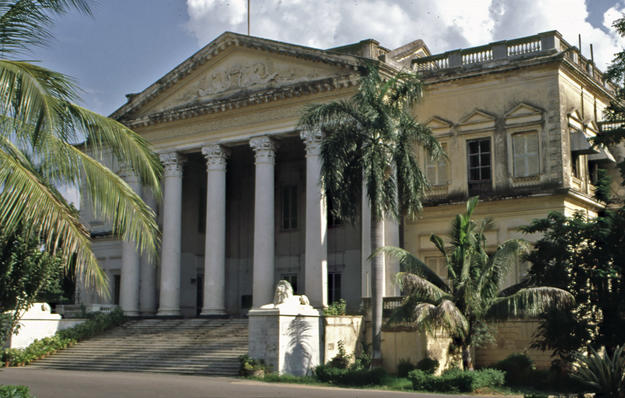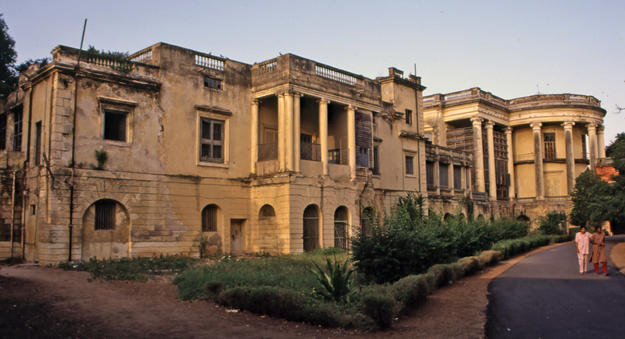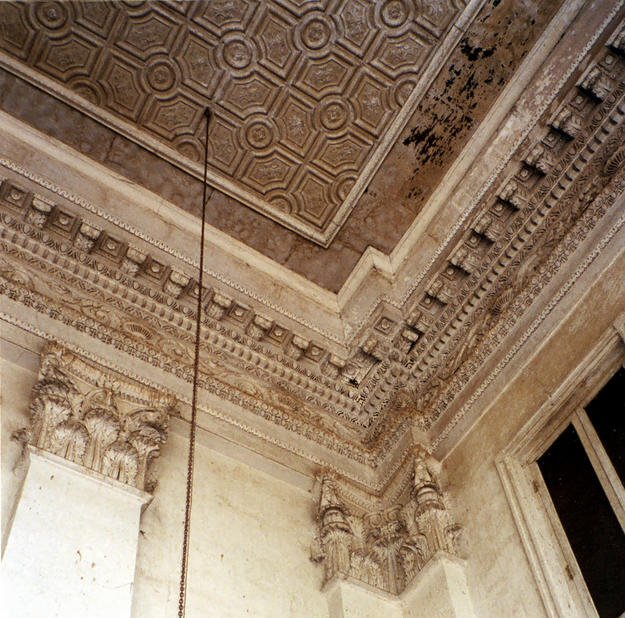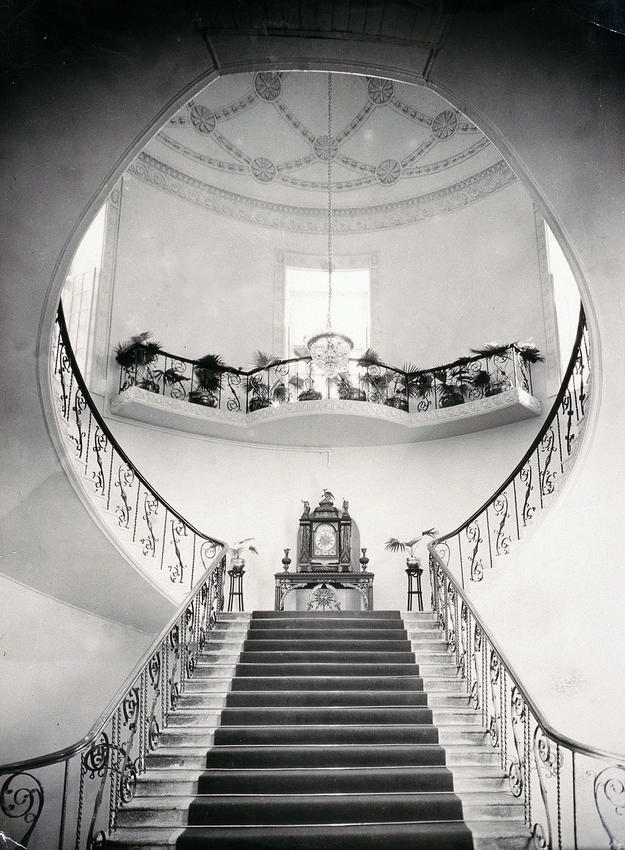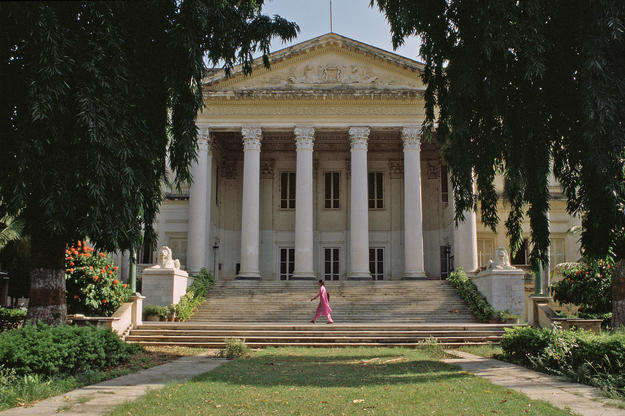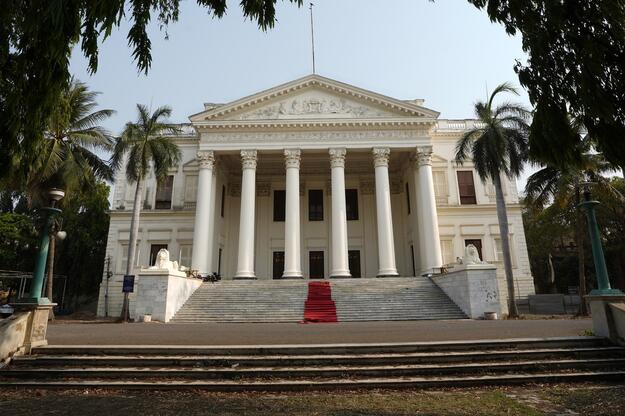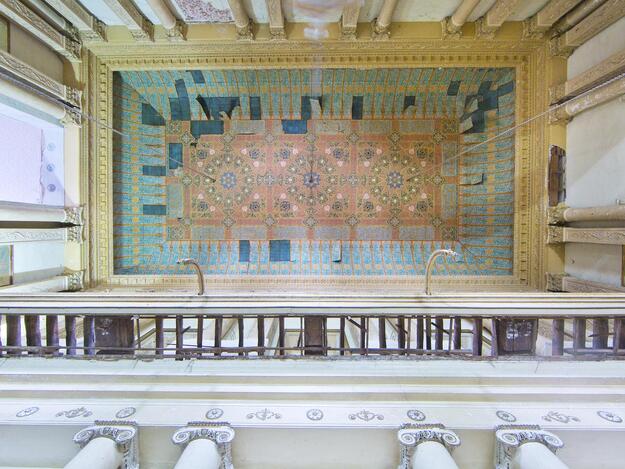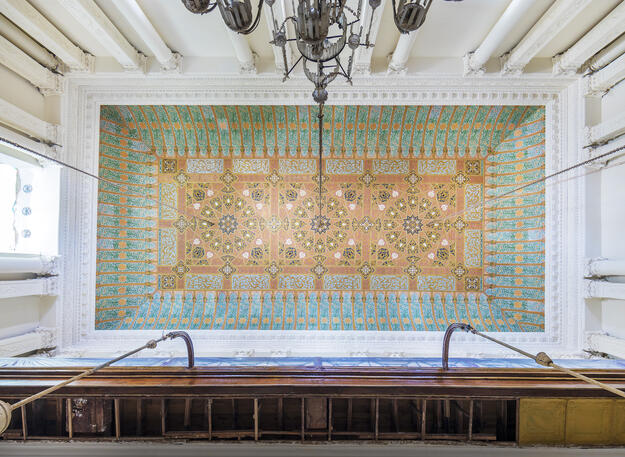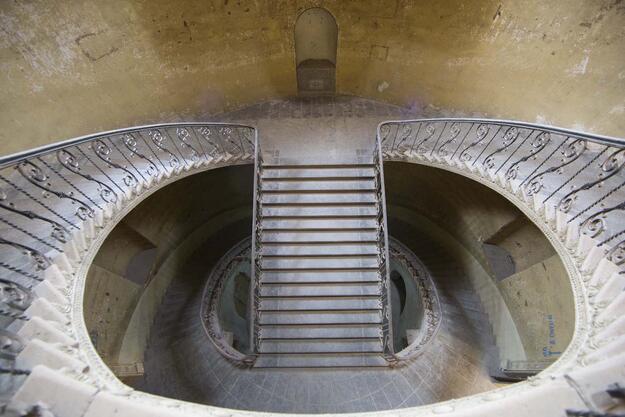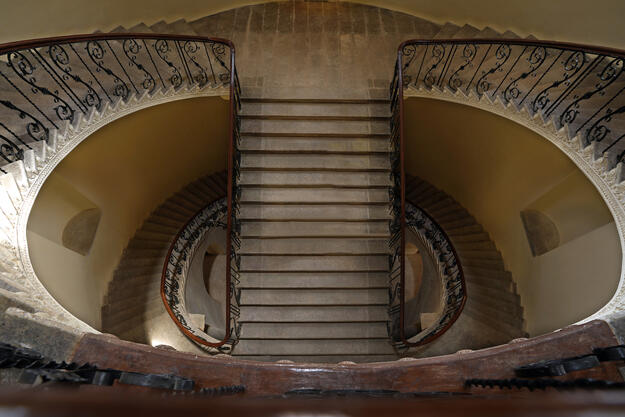Sight History and Significance
A Historic Women's University
Osmania Women’s College, the first institute of higher education for women in the state of Telengana, was not always a college. Originally built as an official British Residency in the early nineteenth century, Osmania represents one of the earliest examples of the classical revival style in India. The building’s original inhabitant was Colonel James Achilles Kirkpatrick, the British representative to the court at Hyderabad from 1797 to 1805. Kirkpatrick commissioned the building from Lt. Samuel Russell of the Madras Engineers during a period of critical economic and military importance for Hyderabad. The building’s construction was financed by the sovereign of the state.
Kirkpatrick’s personal life drew as much attention as his official position. A convert to Islam who possibly acted as a double agent for India, he sparked controversy by marrying a Mughal woman named Khairunnisa Begum, a love story recounted in William Dalrymple’s 2002 book White Mughals. The couple’s union served to improve local Anglo-Indian relations.
From a Residence to a College
Residency Bazaar, as the area where Kirkpatrick built his family home came to be known, emerged as the financial center of Hyderabad in the mid-nineteenth century. In the aftermath of the 1857 Sepoy Mutiny against the British East India Company, the home was fortified with high walls and bastions. When India achieved independence, the building was converted into Osmania Women’s College; the site has continued to function as an institution of higher learning to this day.
Our Involvement
Two Watch Listings
By the end of the twentieth century, heavy traffic, poor maintenance, and faulty repair work had left the college in a poor state. Osmania was included on the 2002 World Monuments Watch after water damage to the timber support structure caused one of the building’s large halls to collapse. Because the main part of the house was unsafe, classes were relocated to the old elephant stables behind the main building. With support from World Monuments Fund (WMF), the trustees of the university conceived a long-term plan for the restoration of the building. Funds from the Robert W. Wilson Challenge to Conserve Our Heritage enabled the completion of condition surveys in 2003.
Because of the historic building’s extensive conservation needs, it was also included on the 2004 Watch. With funding from American Express, a conservation workshop and a training session in conservation were conducted at Osmania in 2004.
Continued Commitment to Osmania
By January 2007, historic research, surveys, and vegetation clearance had been completed, and the structural stability of the building was being monitored and analyzed. A plan for the treatment of the roof and gutter system was created. Due in part to the attention garnered by the project, the central Indian government recognized the building as an Ancient and Historical Monument in 2008. In 2010, WMF assisted the Osmania project team with the development of a Conservation Management Plan.
In 2013, momentum at the site began to build again when WMF, the National Culture Fund, and the Archaeology and Museums Department of Andhra Pradesh joined together to support emergency treatments ensure the building’s historic fabric would be safe during the monsoon season. The following year, WMF supported condition surveys, documentation, and the beginning of conservation treatments in the main hall of the building. In 2023, WMF celebrated the completion of work at the site following two decades of involvement.WMF’s long-standing conservation projects at Osmania, which today educates more than 2,500 pupils, make it possible for the school to continue its educational mandate in its extraordinary setting.
Learn More
World Monuments Fund safeguards cultural heritage around the globe, ensuring our treasured places are preserved for present and future generations. Sign up for our newsletter to receive regular updates on our projects, stories from the field, upcoming events, and more!
![]()
World Monuments Fund's conservation work at the Former British Residency, Osmania University College for Women has been made possible, in part, through a partnership with Osmania University College of Women, Hyderabad, and the Department of Heritage, Government of Telangana, with the generous support of The Robert W. Wilson Charitable Trust, Mr. Richard Broyd, American Express, American Express India, Dr. Tejaswini Yarlagadda, and the Pleach India Foundation.

